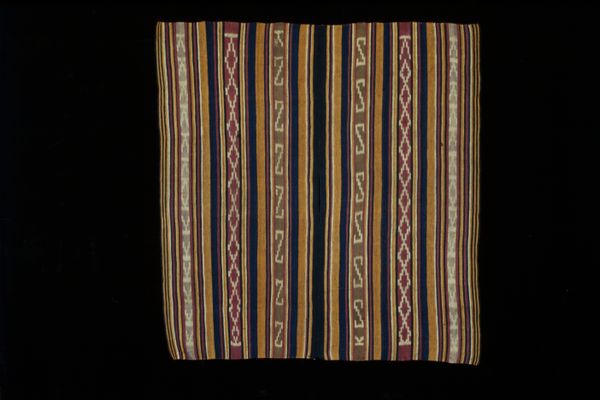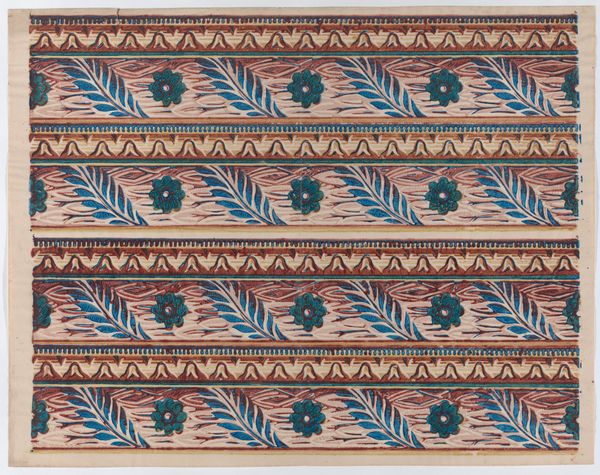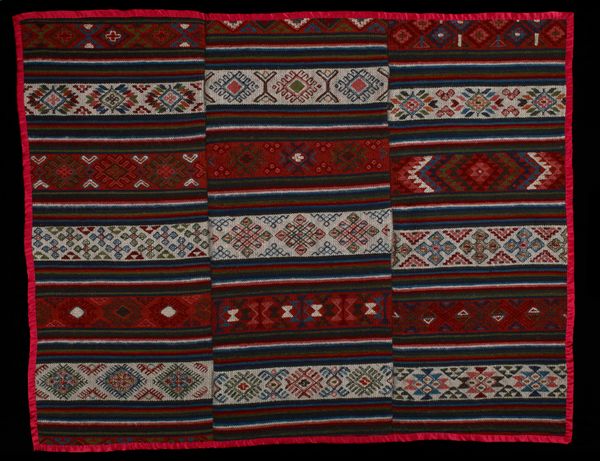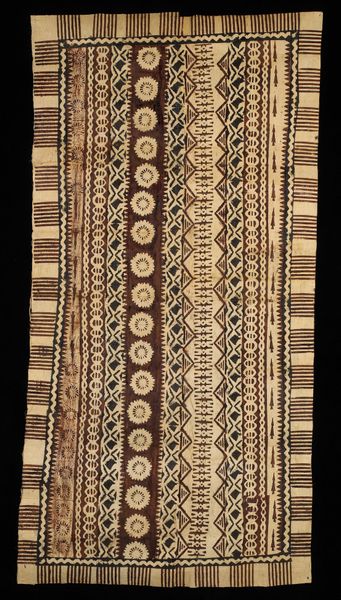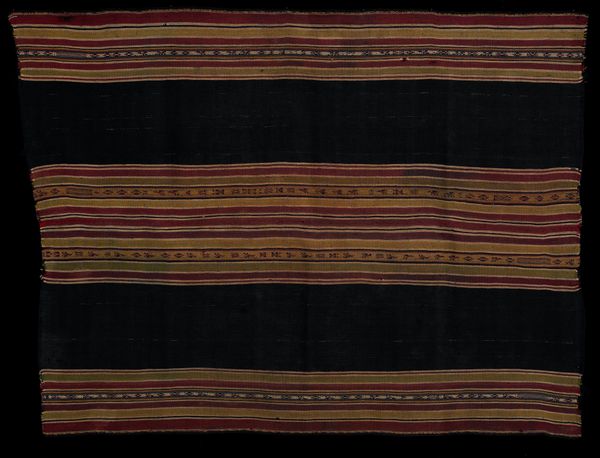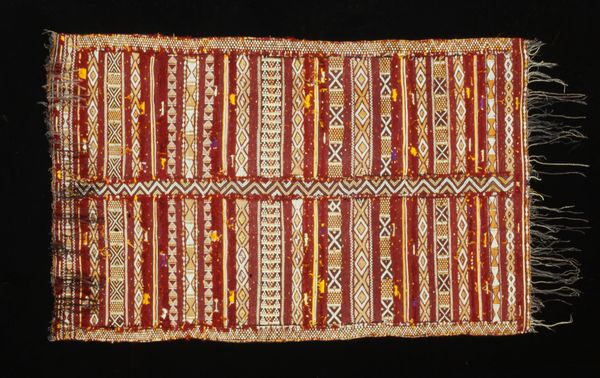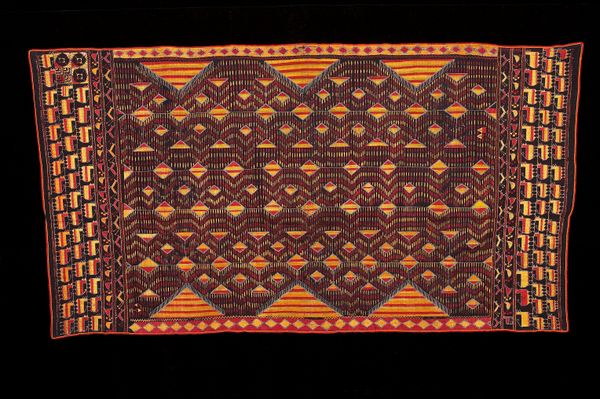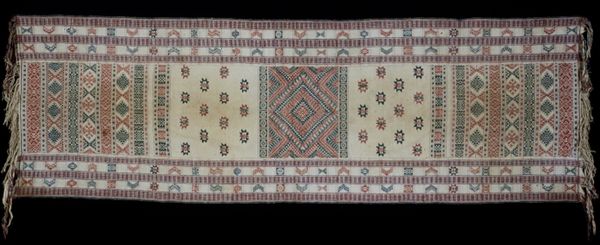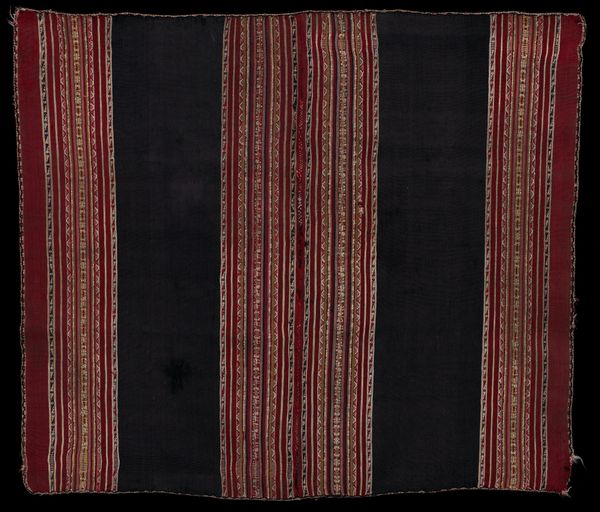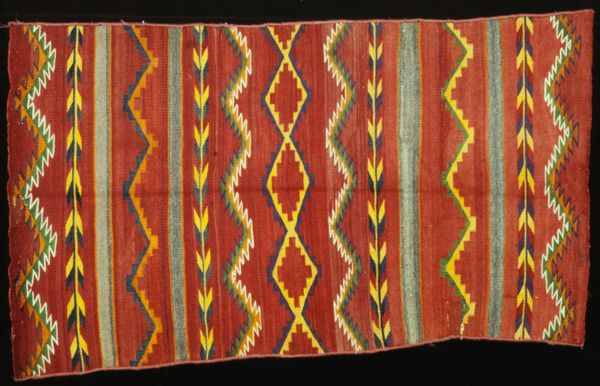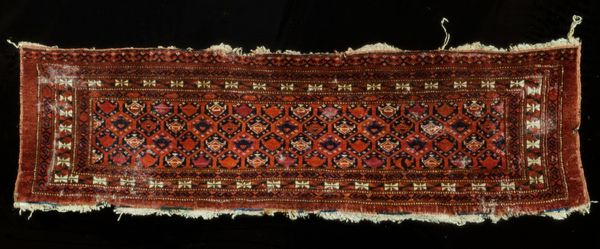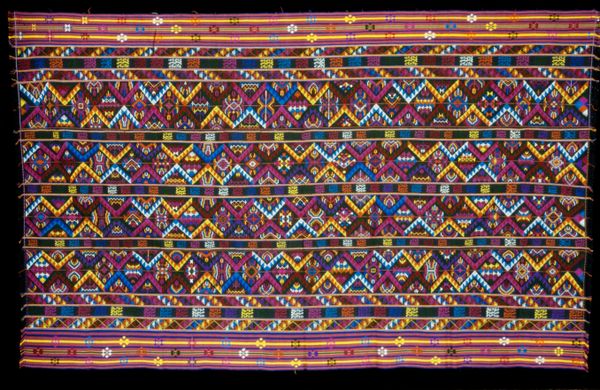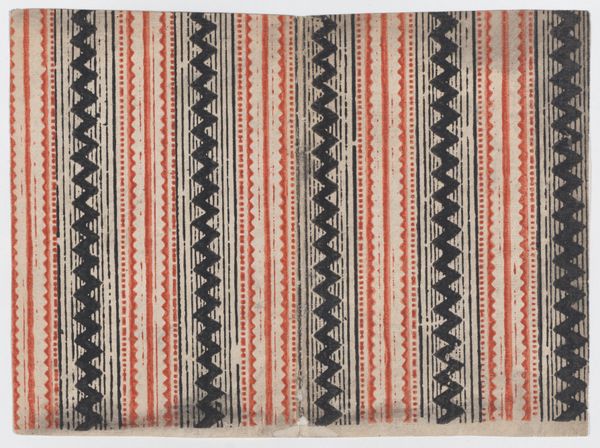
weaving, textile
#
pattern heavy
#
natural stone pattern
#
weaving
#
textile
#
fashion and textile design
#
geometric pattern
#
ethnic pattern
#
geometric
#
repetition of pattern
#
pattern repetition
#
textile design
#
imprinted textile
#
layered pattern
#
indigenous-americas
Dimensions: 51 1/2 x 68 1/2 in. (130.8 x 174.0 cm) (open, laid flat, uneven)
Copyright: Public Domain
Curator: This is an Aymara poncho, dating from the late 19th to early 20th century, crafted from woven cotton. Editor: It looks deceptively simple at first glance, but something about those repeating geometric patterns feels deeply grounding, almost like gazing at rows of cultivated land. Curator: Precisely! The beauty lies in the construction. Look closely at how the weaver meticulously built up the design, block by block, through the interlinking of warp and weft. Think of the hours upon hours of focused labor to achieve this textile’s final form. Editor: The colors also give pause, there are the dark browns and the pops of red, blues and yellows that almost appear dyed through with minerals. Do you think that these natural elements contributed to the original significance of the cloth for its wearer? Curator: Undoubtedly. While we can only speculate about the original owner's individual story, the patterns speak volumes about Aymara cultural heritage, the environment and access to certain materials within it. Each small change in hue and pattern represents a decision, a small act of creation. These design choices imbue the weaving with stories and memories. Editor: So, it’s both functional and incredibly communicative, then. Did the weaving process or access to materials carry any specific value in Aymara society? Curator: I imagine so. When you look at the quality of this cotton textile and the complex weaves displayed here, it reflects a society valuing resourcefulness and refined craftsmanship. Each poncho was more than mere clothing. They provided warmth, identity, and connection to a rich cultural legacy. Editor: That changes everything. Now the patterns remind me less of landscapes and more of interwoven experiences, labor, tradition… Curator: A beautiful reinterpretation! And one more example of how textiles allow makers to embody narratives of cultural exchange and innovation across decades. Editor: Textiles really do tell tales in intricate ways, and understanding those stitches makes one more alive.
Comments
No comments
Be the first to comment and join the conversation on the ultimate creative platform.
